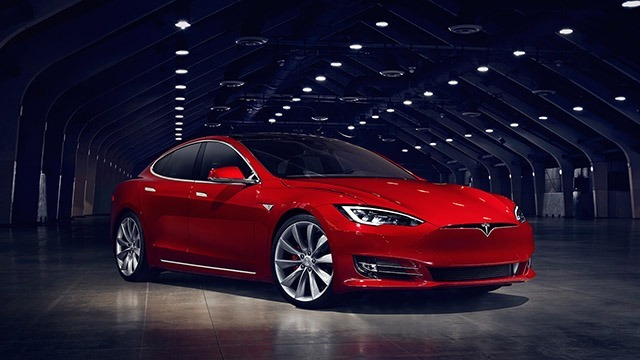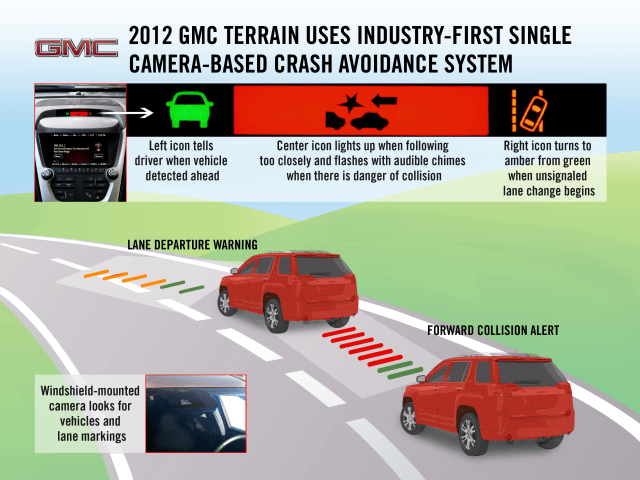Search the Community
Showing results for tags 'NTSB'.
-
The National Transportation Safety Board (NTSB) has issued their preliminary report on the fatal crash involving a Tesla Model S in Autopilot mode and a semi-truck back in May. According to data that was downloaded from the Model S, the vehicle was traveling above the speed limit on the road (74 mph in 65) and that Autopilot was engaged. The speed helps explain how the Model S traveled around 347 feet after making the impact with the trailer - traveling 297 feet before hitting a utility pole, and then going another 50 feet after breaking it. The report doesn't have any analysis of the accident or a possible cause. NTSB says their investigators are still downloading data from the vehicle and looking at information from the scene of the crash. A final report is expected within the next 12 months. Car and Driver reached out for comment from both Tesla and Mobileye - the company that provides Tesla the chips that process the images being captured by Autopilot's cameras. Tesla didn't respond, but a blog post announcing the crash said: "neither Autopilot nor the driver noticed the white side of the tractor trailer against a brightly lit sky, so the brake was not applied." A spokesman for Mobileye told the magazine that their chips aren't designed to flag something like the scenario that played out in the crash. “The design of our system that we provide to Tesla was not . . . it’s not in the spec to make a decision to tell the vehicle to do anything based on that left turn, that lateral turn across the path. Certainly, that’s a situation where we would hope to be able to get to the point where the vehicle can handle that, but it’s not there yet,” said Dan Galves, a Mobileye spokesperson. It should be noted that hours before NTSB released their report, Mobileye announced that it would end its relationship with Tesla once their current contract runs out. The Wall Street Journal reports that disagreements between the two on how the technology was deployed and the fatal crash caused the separation. “I think in a partnership, we need to be there on all aspects of how the technology is being used, and not simply providing technology and not being in control of how it is being used,” said Mobileye Chief Technical Officer Amnon Shashua during a call with analysts. “It’s very important given this accident…that companies would be very transparent about the limitations” of autonomous driving systems, said Shashua. “It’s not enough to tell the driver to be alert but to tell the driver why.” Recently, Mobileye announced a partnership with BMW and Intel in an attempt to get autonomous vehicles on the road by 2021. Source: NTSB, 2, Car and Driver, Wall Street Journal (Subscription Required) View full article
-
The National Transportation Safety Board (NTSB) has issued their preliminary report on the fatal crash involving a Tesla Model S in Autopilot mode and a semi-truck back in May. According to data that was downloaded from the Model S, the vehicle was traveling above the speed limit on the road (74 mph in 65) and that Autopilot was engaged. The speed helps explain how the Model S traveled around 347 feet after making the impact with the trailer - traveling 297 feet before hitting a utility pole, and then going another 50 feet after breaking it. The report doesn't have any analysis of the accident or a possible cause. NTSB says their investigators are still downloading data from the vehicle and looking at information from the scene of the crash. A final report is expected within the next 12 months. Car and Driver reached out for comment from both Tesla and Mobileye - the company that provides Tesla the chips that process the images being captured by Autopilot's cameras. Tesla didn't respond, but a blog post announcing the crash said: "neither Autopilot nor the driver noticed the white side of the tractor trailer against a brightly lit sky, so the brake was not applied." A spokesman for Mobileye told the magazine that their chips aren't designed to flag something like the scenario that played out in the crash. “The design of our system that we provide to Tesla was not . . . it’s not in the spec to make a decision to tell the vehicle to do anything based on that left turn, that lateral turn across the path. Certainly, that’s a situation where we would hope to be able to get to the point where the vehicle can handle that, but it’s not there yet,” said Dan Galves, a Mobileye spokesperson. It should be noted that hours before NTSB released their report, Mobileye announced that it would end its relationship with Tesla once their current contract runs out. The Wall Street Journal reports that disagreements between the two on how the technology was deployed and the fatal crash caused the separation. “I think in a partnership, we need to be there on all aspects of how the technology is being used, and not simply providing technology and not being in control of how it is being used,” said Mobileye Chief Technical Officer Amnon Shashua during a call with analysts. “It’s very important given this accident…that companies would be very transparent about the limitations” of autonomous driving systems, said Shashua. “It’s not enough to tell the driver to be alert but to tell the driver why.” Recently, Mobileye announced a partnership with BMW and Intel in an attempt to get autonomous vehicles on the road by 2021. Source: NTSB, 2, Car and Driver, Wall Street Journal (Subscription Required)
-
William Maley Staff Writer - CheersandGears.com November 15, 2012 The National Transportation Safety Board announced their 2013 Most Wanted safety list which is used to "increase awareness of, and support for, the most critical changes needed to reduce transportation accidents and save lives." On this year's list, the NTSB put "Collision-Avoidance" technologies to be standard on all new vehicles. What the NTSB means by "Collision-Avoidance" technologies are features like rear-end collision warning, lane departure warning, adaptive cruise control, and advanced braking systems. Most of these features are either standard or optional on luxury vehicles or high-trim models. The NTSB wants to see these features on new models. The NTSB cites data from NHTSA which says forward collision warning can prevent 879 fatal car crashes annually and lane departure warning can prevent 247 fatal crashes annually. "What they are recommending is a safety system for cars where you have a multitude of things that cooperate together to dramatically improve safety in a vehicle," said Clarence Ditlow, executive director of the Center for Auto Safety. Automakers aren't happy with this suggestion, saying that adding this equipment to their vehicle could add thousands to the base price. The Alliance of Automobile Manufacturers say collision warning systems could add between $1,000 to $3,000 per vehicle, while collision warning systems that activate the brakes cost around $3,500 per vehicle. The NTSB shot back to the claims of the Alliance saying that "many of the safety features rely on the same electronic sensors and computers." "Some of this technology can be done for literally just a few dollars. I don't think we're talking about adding thousands of dollars to a car," said NTSB board member Robert Sumwalt. Source: Associated Press William Maley is a staff writer for Cheers & Gears. He can be reached at [email protected] or you can follow him on twitter at @realmudmonster. View full article
- 7 replies
-
- Collision-Avoidance
- NTSB
-
(and 2 more)
Tagged with:
-

NTSB: Make Collision-Avoidance Tech Standard On All Cars
William Maley posted an article in Automotive Industry
William Maley Staff Writer - CheersandGears.com November 15, 2012 The National Transportation Safety Board announced their 2013 Most Wanted safety list which is used to "increase awareness of, and support for, the most critical changes needed to reduce transportation accidents and save lives." On this year's list, the NTSB put "Collision-Avoidance" technologies to be standard on all new vehicles. What the NTSB means by "Collision-Avoidance" technologies are features like rear-end collision warning, lane departure warning, adaptive cruise control, and advanced braking systems. Most of these features are either standard or optional on luxury vehicles or high-trim models. The NTSB wants to see these features on new models. The NTSB cites data from NHTSA which says forward collision warning can prevent 879 fatal car crashes annually and lane departure warning can prevent 247 fatal crashes annually. "What they are recommending is a safety system for cars where you have a multitude of things that cooperate together to dramatically improve safety in a vehicle," said Clarence Ditlow, executive director of the Center for Auto Safety. Automakers aren't happy with this suggestion, saying that adding this equipment to their vehicle could add thousands to the base price. The Alliance of Automobile Manufacturers say collision warning systems could add between $1,000 to $3,000 per vehicle, while collision warning systems that activate the brakes cost around $3,500 per vehicle. The NTSB shot back to the claims of the Alliance saying that "many of the safety features rely on the same electronic sensors and computers." "Some of this technology can be done for literally just a few dollars. I don't think we're talking about adding thousands of dollars to a car," said NTSB board member Robert Sumwalt. Source: Associated Press William Maley is a staff writer for Cheers & Gears. He can be reached at [email protected] or you can follow him on twitter at @realmudmonster.- 7 comments
-
- Collision-Avoidance
- NTSB
-
(and 2 more)
Tagged with:



